Ocotillo
Fouquieria splendens
This is probably one of our most iconic native plants. This species has an iconic vase or candelabra shape. This species is also known by many other more locally dominant names like buggywhip, coachwhip, candlewood, slimwood, desert coral, and Jacob's staff. The thorny stems rarely branch and most emerge from the base but just above a very, very short trunk that is usually shorter than a foot, and often not noticed. Plants grow from 6 to well over 20’ tall. As they get older they produce more and more stems. Leaves are cold or drought deciduous but can appear and disappear up to about 6-7 times a year. The reddish orange flowers appear after high humidity or rainfall in spring, summer, and occasionally fall. Flowers occur at the end of each “wand” or branch. Tan capsules follow the flowers and are full of winged, flat seeds.
This species has hedged its bets with several survival strategies: the ability to drop leaves upon any hint of drought (an ocotillo can grow and shed leaves several times a year), the ability for the plant to photosynthesize through the trunk when leaves drop, the ability to wake up from dormancy quickly and spread new roots when any moisture hits the ground, the arrangement of the stems that help the plant to shade itself...this plant is made to survive.
Most plants belong to the subspecies splendens. But there are various pinkish, white, or cream flowered subspecies including subsp. albiflora, campanulata, and breviflora. These are rare in the trade—we’ve once seen subspecies campanulata in the trade, which makes sense since it is the only pink subspecies found even close to us (most are found in Mexico).
Full sun, low water—water established plants in the ground about 2-3 times a month in summer to keep plants healthy and growing fast. In containers, water 2 times a week in summer. In winter plants mostly don’t need water unless it doesn’t rain at all. Water once a week to every 10 days in containers in winter. If plants are leafless and have been without water for a while, in addition to watering the ground, splash the stems with water—ocotillo can actually take water in through the stem. This species is hardy to 0˚F.
Plants are often available as bare-root plants. Unfortunately there are a few problems with getting plants this way: first, there is a lot of poaching and unsustainable harvesting of wild plants that feeds this market (the demand for mature ocotillo plants is high). Second, the methods used to “bare-root” these plants causes a lot of damage and many plants, maybe most, do not recover. Often, you don’t even know how long they’ve been sitting out in the sun, bare root. We recommend finding seed-grown, containerized plants. Though they will be smaller than mature ocotillos, they almost always transplant successfully if proper planting methods are used.
Many, many species depend on the ocotillo for food: nectar feeding insects like native bees, and butterflies, and hummingbirds depend on the dense spikes of reddish orange, tubular blooms that usually emerge in February in the low desert, or as late as May in the grassland and upper elevations, and can last a few months. Hummingbirds are extremely dependent on wild ocotillos as it is one of the only species that has a dependable and copious flush of blooms even in the driest years. The flowers are suited to favor the hummingbird, the primary pollinator, but some species cheat: carpenter bees and verdins will slit the base of the flower and steal nectar seemingly without pollinating the plant—actually, the carpenter bees DO pollinate the flowers by crawling about the inflorescence and in some places, like Texas, they are more primary to pollination of ocotillos than hummingbirds (hummingbirds do not migrate through those areas). The flowers are followed by seeds that are enjoyed by many seed-eating species of birds (like finches) and small mammals (like the antelope ground squirrel which also eats the flowers).
Ocotillos are used as “living fences”, though the demand for this iconic hardscape fence has caused more poaching of this species. Canes are separated from each other into individual canes, and wired together as one long fence where the base of the stems are buried. Often these stems will re-root and plants will grow. Though we love the look of the ocotillo fence ourselves, we don’t recommend buying the pre-wired ocotillo fences, which mostly don’t green up anyway since they aren’t put into the ground quick enough for some of the canes to re-root.
Blossoms soaked for a summer drink, a blood purifier and tonic. Seeds were parched and ground into flour for mush or cakes. Papago pressed the nectar out of blossoms, hardened it like rock candy and chewed. Flowers sucked for nectar. Stems used for fences and houses. Apache made a powdered root paste to ease swelling. Gum from the bark was used to wax leather.
The species name, splendens, means splendid.
Found on dry, rocky or gravelly slopes and sandy plains from sea level to 5,000’ in southern California, Arizona, southern New Mexico, southern Texas; south into central Mexico.
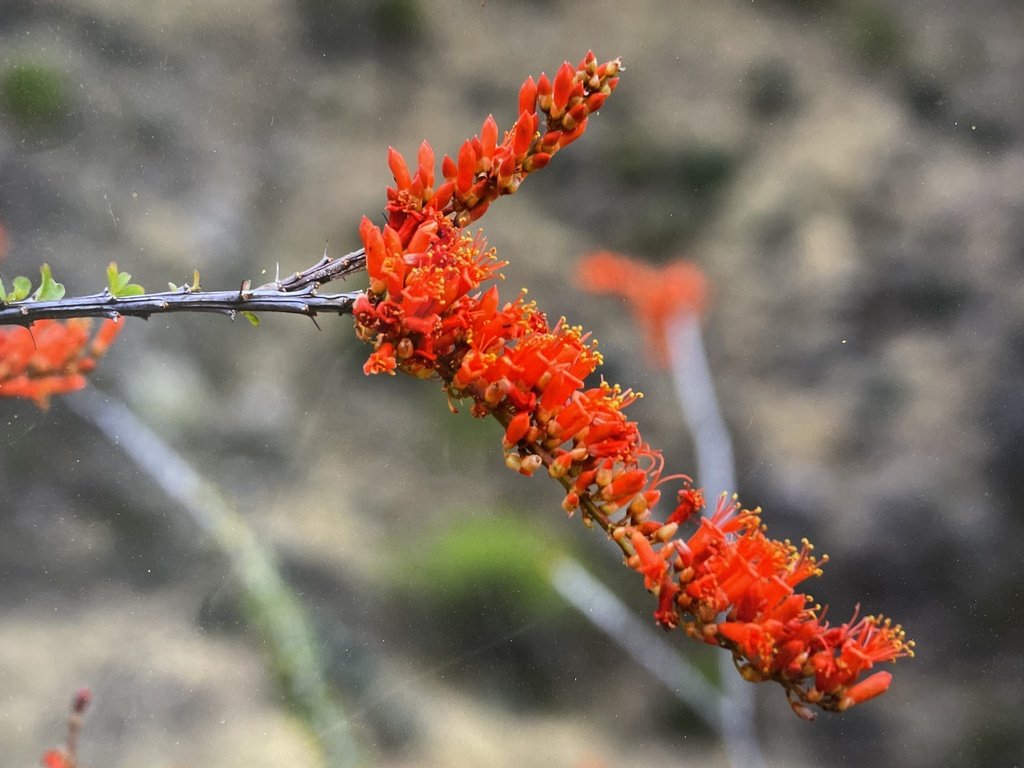
Flower detail, photo by truett-martin, iNaturalist
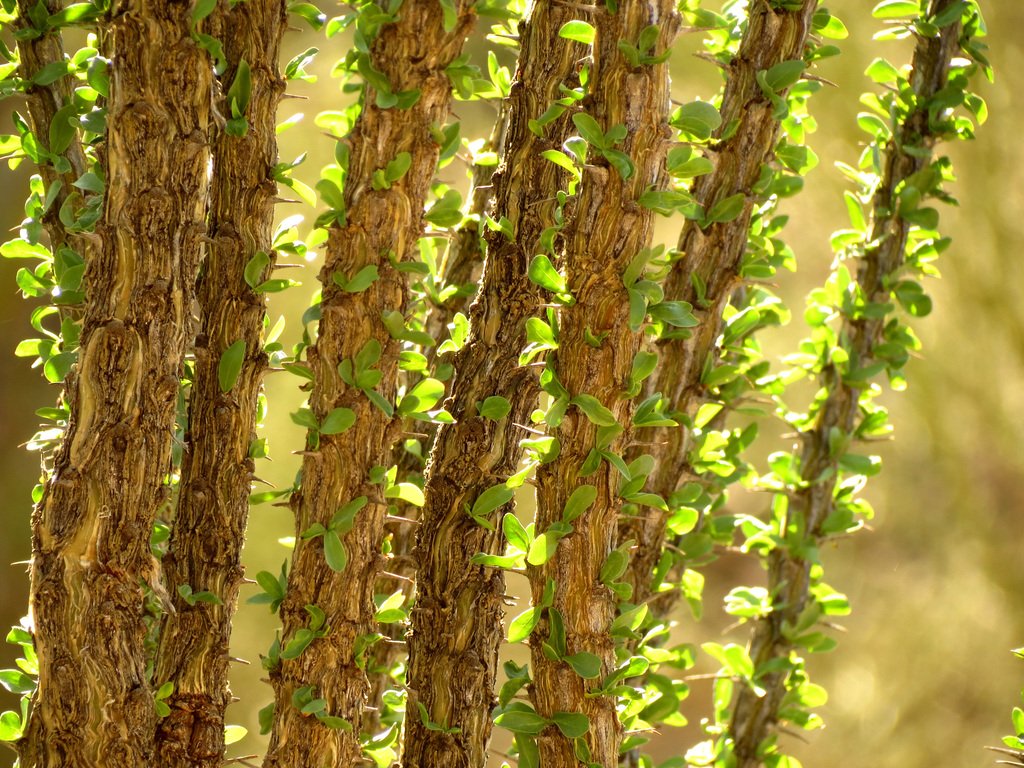
Stem detail, photo by Katja Schulz, iNaturalist
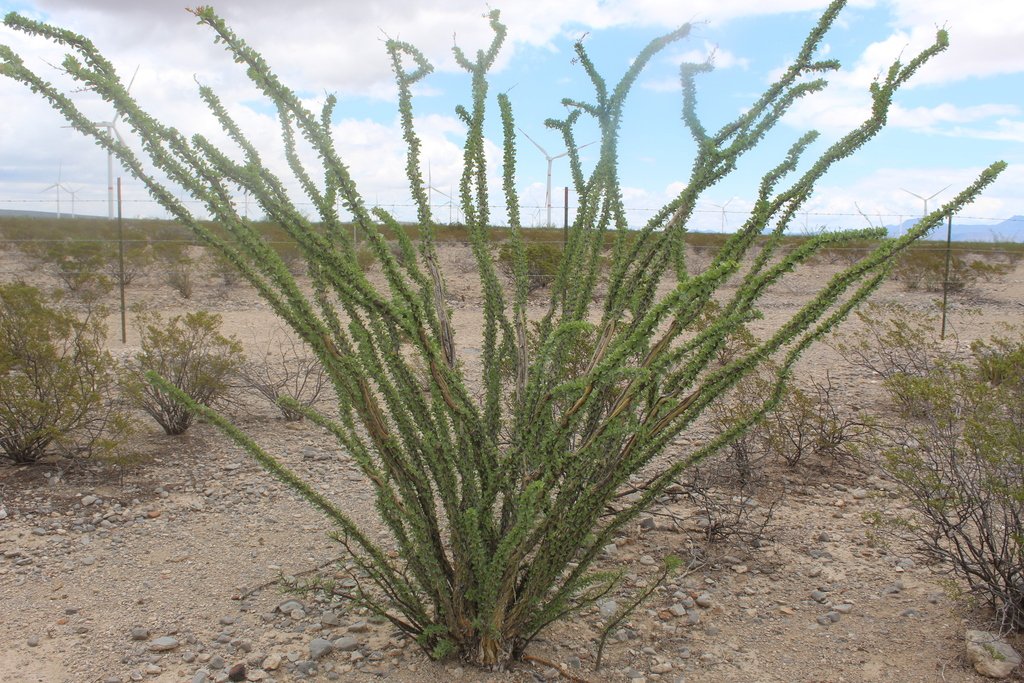
A very typical shape for ocotillo, photo by Jesús Niño C., iNaturalist
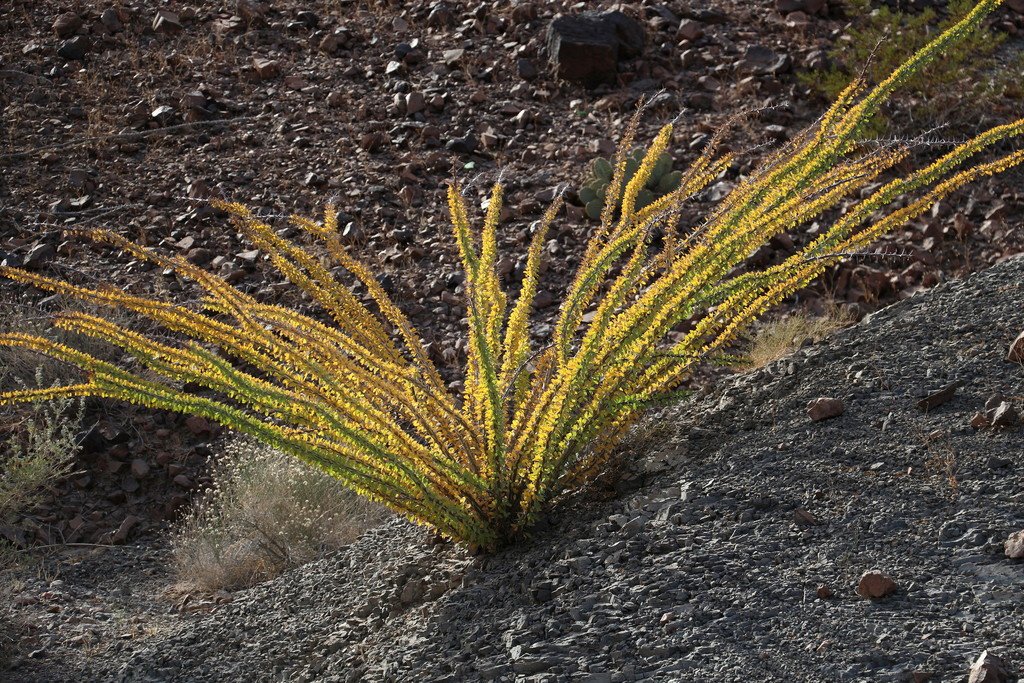
Sometimes they exhibit yellow leaves, usually in fall. This individual is wider and lower than usual probably because it is growing on a very steep slope. Photo by spheller, iNaturalist

With the right timing of cold and rain, you might get orange or even red fall color. Photo by McKenna, iNaturalist
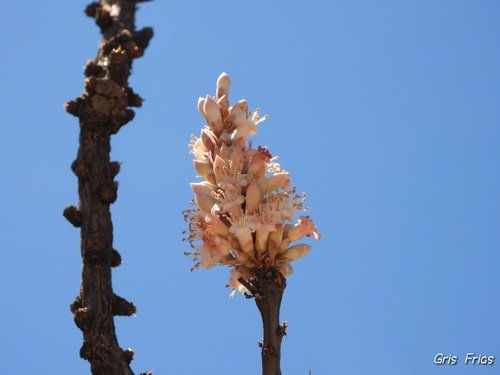
The rare variety albiflora, photo by proservi, iNaturalist

